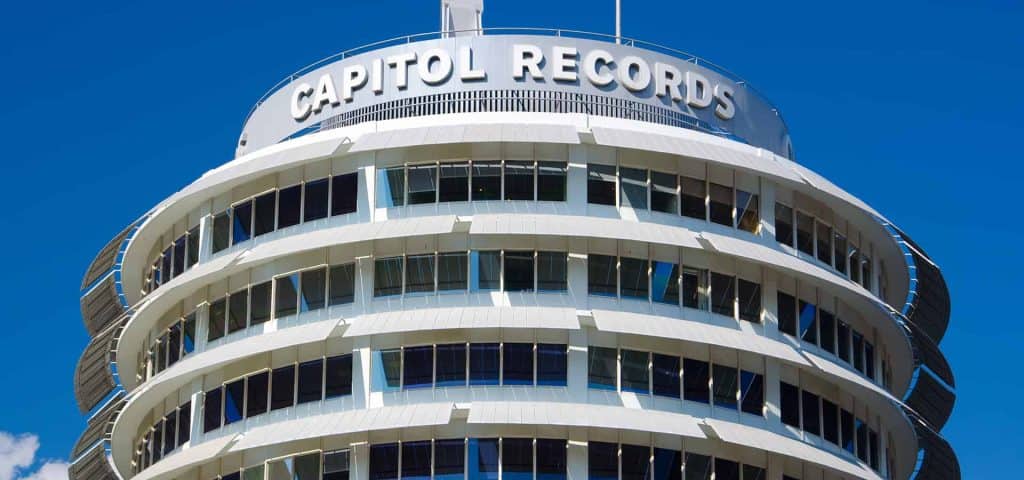
Hollywood has always thrived on spectacle. Its streets and hills are littered with architecture that wears its fantasies on its sleeve, Egyptian temples, Chinese pagodas, Spanish haciendas, all vying for attention beneath the unblinking California sun. Yet, among this feverish jumble of styles, one of the city’s most enduring landmarks is a model of restraint: a modest concrete-and-glass cylinder capped by a slender, needle-like spire.
For nearly seventy years, the Capitol Records Building at 1750 Vine Street has been as integral to Hollywood’s identity as the brass stars embedded in the sidewalk below. With the passing of its architect, Louis Naidorf, at ninety-six, we are reminded that even in a city built on grand illusions, some of its most lasting icons began as the work of an untested hand.
Naidorf was just twenty-four when the project came to him, a junior designer at Welton Becket Associates, still green enough to accept an assignment without recognizing the weight of it. Legend has it that he envisioned the world’s first circular office building as a playful homage to a stack of 45 rpm records, with the spire doubling as a turntable spindle. In the retelling, it’s a piece of narrative serendipity worthy of the movies.
But Naidorf himself was quick to deflate the myth. His design, he insisted, was born of calculation, not whimsy: a round building reduced the cost of exterior walls and air-conditioning, while a central core neatly housed elevators, stairwells, and plumbing. At the outset, he didn’t even know his client was a record company. Capitol’s president, Glenn Wallichs, recoiled at the shape, fearing it was too gimmicky. Ironically, it was the lender who recognized the marketable novelty.
By the time the building opened in 1956, the “record stack” had become a happy accident, a beacon of mid-century optimism rendered in the streamlined exuberance of design. Its circular floors, shaded by cantilevered concrete sunshades, seemed to hum with perpetual motion, an office tower that looked ready to spin. And from the first day, the red light atop its spire pulsed “Hollywood” in Morse code, a subtle, continuous broadcast from the heart of the dream machine.
Inside, the building doubled as an instrument. Funded in large part by the success of Nat King Cole, hence the moniker “The House That Nat Built”, it housed subterranean echo chambers designed by Les Paul himself, capable of producing a five-second reverberation that bathed recordings by Frank Sinatra, the Beach Boys, and countless others in a cathedral-like glow. The Capitol Records Building was not merely the site of music-making; it was part of the music.
For Naidorf, the project was both triumph and trap. To create something so instantly iconic so early in one’s career is to be permanently tethered to it, every later work measured against that first, perfect statement. But architecture is a long conversation with time. Buildings outlast their makers; they accrue new meanings with each generation that encounters them. Naidorf’s opening remark to the future was a circle, a form both efficient and poetic, that became an accidental emblem for an industry and a city. Now, the architect’s needle has lifted, but his record plays on, spinning still in the Hollywood sun.

